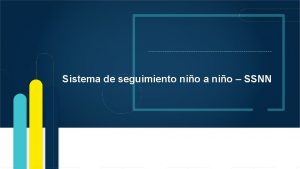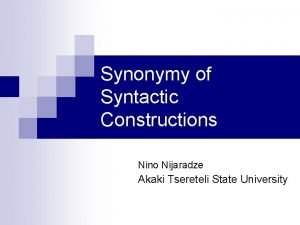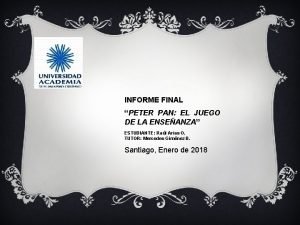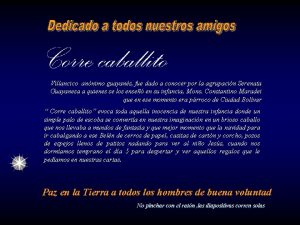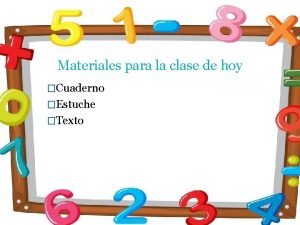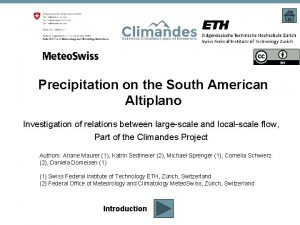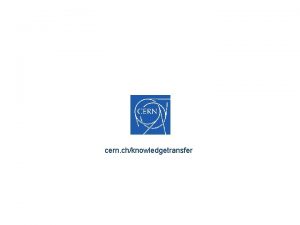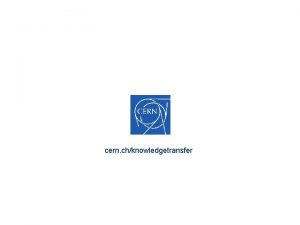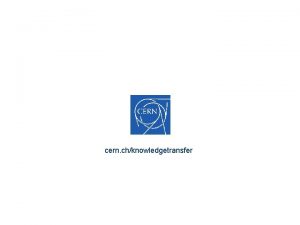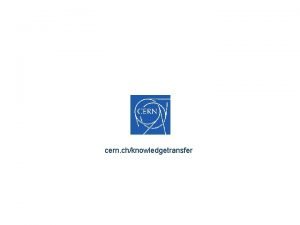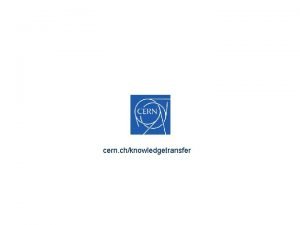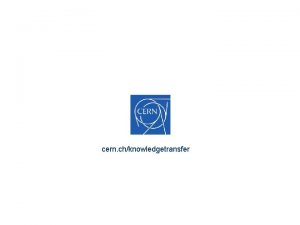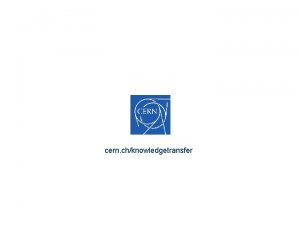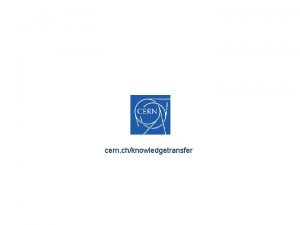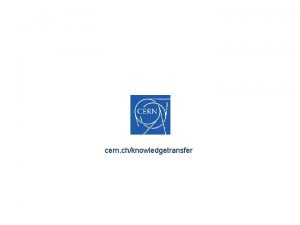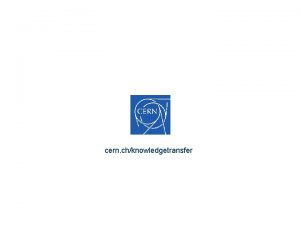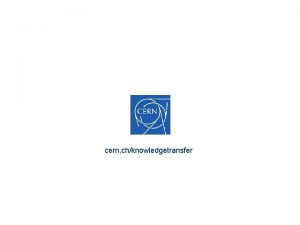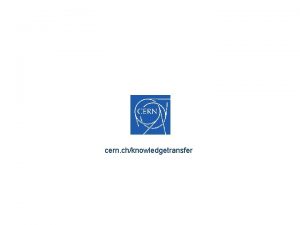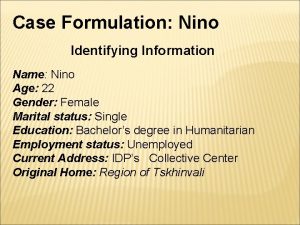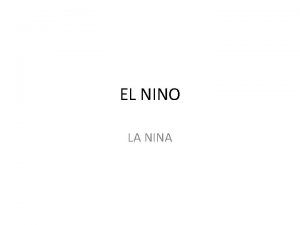cern chknowledgetransfer Outline NINO Mo Gr Description of


















- Slides: 18

cern. ch/knowledgetransfer

Outline NINO Mo. Gr • • • Description of the Technology Development Context Intellectual Property Technical Specifications / Features Exploitation Licences Knowledge Transfer | Accelerating Innovation Tiago Araújo, CERN KT Training

NINO Description of the Technology An ultra-fast differential amplifier-discriminator Knowledge Transfer | Accelerating Innovation Tiago Araújo, CERN KT Training

NINO Development Context and Intellectual Property • Developed at CERN under LAA project • • Front-end electronics ALICE TOF detector • • • Used for time-of-flight measurements for particle vertex reconstruction in the ALICE experiment of the LHC collider. NINO 32 channels version, NINO board CERN owns 100% the intellectual property • • LAA was a well-defined R&D activity for the study of new detection techniques for the next generation of hadron-colliders that would reach the scale of Te. Vs (1986). The project had a huge impact in the LHC electronics. In recognition of the LAA financial contribution that enabled the development of NINO, the net income from exploitation of the NINO chips is shared between CERN and a University member of the LAA project. Protected by Know-how Knowledge Transfer | Accelerating Innovation Tiago Araújo, CERN KT Training

NINO Innovative Features • • • Low noise-large bandwidth input stage; Adjustable discriminator threshold; Adjustable input impedance; Low delay in the amplification and high slew rate; Small hysteresis on the threshold; Knowledge Transfer | Accelerating Innovation Tiago Araújo, CERN KT Training

NINO Technical Specifications • • 0. 25 um CMOS technology Size: 2 x 4 mm 2 # channels: 8 Power supply: 2. 5 V Peaking time: 1 ns Input signal range: [100 f. C, 2 p. C] Noise: < 5000 e- rms Knowledge Transfer | Accelerating Innovation • • • Threshold: [10 f. C, 100 f. C] Front edge time jitter: < 25 ps rms Power consumption: 30 m. W/channel Differential input impedance: [40 W, 75 W] Rate: > 10 MHz Tiago Araújo, CERN KT Training

NINO Exploitation • Applications: • Life Sciences • Medical imaging • Material research • R&D licenses in Germany, UK, Spain, Portugal, Slovakia, Romania, China, … Knowledge Transfer | Accelerating Innovation Tiago Araújo, CERN KT Training

NINO Licences 2 0 1 4 2 0 1 5 • • Beijing Normal University (2014) University of Glasgow (2014) University of Physics SAS, Slovakia (2014) IFINHH (Horia Hulubei National Institute of Physics and Nuclear Engineering) Romania (2014) • • • LIP, Portugal (2015) Universitat Politecnica Catalunya (2015) INFN (Instituto Nazionale di Fisica Nucleare), Italy, 2015 LPCCAEN , France (2015) VECC (Variable Energy Cyclotron) India (2015) University of Delhi, India (2015) Knowledge Transfer | Accelerating Innovation Tiago Araújo, CERN KT Training

Mo. Gr Description of the technology Molybdenum – Graphite (Mo. Gr) is a new generation of metal- and ceramic- matrix composites. Mo. Gr is showing promising results, in particular Copper. Diamond and Molybdenum Carbide – Graphite. Knowledge Transfer | Accelerating Innovation Tiago Araújo, CERN KT Training

Mo. Gr Development Context • Particle beams have reached unprecedented energy and energy density. This trend is set to continue for future accelerators (690 MJ for HL-LHC). • Beam-induced accidents, beam losses and beam stability are amongst the most relevant issues for high power particle accelerators! • Beam Intercepting Devices (such as collimators) are inherently exposed to such events! Knowledge Transfer | Accelerating Innovation Tiago Araújo, CERN KT Training

Mo. Gr Development Context The collimation system must satisfy 2 main functions: C/C • Multi-stage Beam Cleaning, i. e. removing stray particles which would induce quenches in SC magnets. • Machine Protection, i. e. shielding the other machine components from the catastrophic consequences of beam orbit errors. e p Shower e C/C Knowledge Transfer | Accelerating Innovation W Tertiary halo p Superconducting magnets Absorber p Secondary halo Shower p p Absorber Impact parameter ≤ 1 mm Unavoidable losses Secondary Collimator Primary halo (p) Primary Collimator Core Beam propagation SC magnets and particle physics exp. W Tiago Araújo, CERN KT Training

Mo. Gr Development Context • Electrical Conductivity. Maximize it, to limit Resistive-wall impedance • Thermal Conductivity. Maximize it, to maintain geometrical stability under steady-state losses • Coefficient of Thermal Expansion. Minimize it, to increase resistance to thermal shock induced by accidental beam impact • Melting/Degradation Temperature. Maximize it, to withstand high temperatures reached in case of accidents • Specific Heat. Maximize it, to improve thermal shock resistance (lowers temperature increase) • Ultimate Strength. Maximize it, to improve thermal shock resistance • Radiation-induced Degradation. Minimize it, to improve component lifetime under long term particle irradiation • Outgassing Rate. Minimize it, to ensure compatibility with UHV environment. Knowledge Transfer | Accelerating Innovation Tiago Araújo, CERN KT Training

Mo. Gr Technical Specifications Knowledge Transfer | Accelerating Innovation Tiago Araújo, CERN KT Training

Mo. Gr Intellectual Property • Developed under collaboration between CERN and an Italian company • CERN has filed the patent application and the company is a co-applicant of the patent • Both CERN and the company share the patent management costs and benefits related Knowledge Transfer | Accelerating Innovation Tiago Araújo, CERN KT Training

Mo. Gr Exploitation Thermal Management for High Power Electronics Fusion Engineering High temperature Aerospace Applications Advanced Braking Systems Solar Energy Applications Knowledge Transfer | Accelerating Innovation Tiago Araújo, CERN KT Training

Questions Knowledge Transfer | Accelerating Innovation Tiago Araújo, CERN KT Training

Molybdenum - Graphite The inventors found that a molybdenum carbide / carbon composite comprising carbon fibers allows to combine the desirable properties of metals (such as large electrical conductivity and high fracture toughness) with high thermal conductivity, low density, and low coefficient of thermal expansion. This combination of properties makes the new family of materials ideally suited for applications in beam intercepting devices, such as beam jaws in collimators, but also for a large number of other applications with similar requirements, such as for thermal management applications for microelectronics, braking discs for high-end sport cars, or materials for plasma-facing components in nuclear fusion reactors. The composite material may be a metal matrix composite and/or ceramic matrix composite. The molybdenum carbide may comprise Mo 2 C and/or other molybdenum carbide phases. Knowledge Transfer | Accelerating Innovation Tiago Araújo, CERN KT Training

NINO Licences and scope: additional info • Beijing Normal University (2014) - development of readout electronics for arrays of silicon photomultipliers to be used in timeresolved fluorescence spectroscopy • LIP, Portugal (2015) – CMS TOTEM • Universitat Politecnica Catalunya (2015) – development of a LIDAR camera for 3 D imaging through TOF technique • University of Glasgow (2014) – new focal plane hodoscope • University of Physics SAS, Slovakia (2014) – position sensitive scintillator Knowledge Transfer | Accelerating Innovation Tiago Araújo, CERN KT Training
 Seguimiento nominal
Seguimiento nominal Sentence outline example
Sentence outline example Vuela bajo
Vuela bajo Nino kiknadze
Nino kiknadze Nino constructions
Nino constructions Quiénes son los personajes de la rana y la serpiente
Quiénes son los personajes de la rana y la serpiente El nino enso
El nino enso Todos tenemos un niño interior frases
Todos tenemos un niño interior frases Guayans
Guayans Puntos cardinales para niños
Puntos cardinales para niños Desde niño yo te llevo muy adentro
Desde niño yo te llevo muy adentro Fortalezas de un niño
Fortalezas de un niño La nina el nino
La nina el nino Niño pensando
Niño pensando Me enfermaba con frecuencia. 2. íbamos a la playa.
Me enfermaba con frecuencia. 2. íbamos a la playa. Niña y niño diferencias
Niña y niño diferencias Historia de los derechos del niño
Historia de los derechos del niño Maria soñe que tu niño
Maria soñe que tu niño La nina e el nino
La nina e el nino
